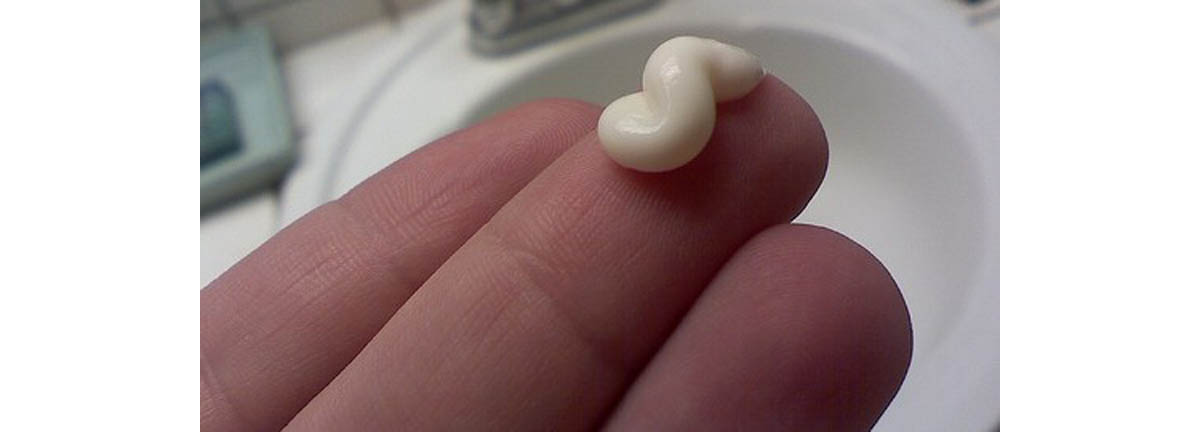Table of Contents
Ironically, skin care products are some of the most common triggers of psoriasis flare-ups. Everyone who has psoriasis needs to read labels to make sure not to put products containing any of the following ten ingredients on the skin.

1. Nickel in inexpensive earrings, bracelets, necklaces, body piercings, and rings.
Many people who have psoriasis also have a nickel allergy. Skin contact with nickel can trigger both the allergy at the site of contact with the metal and psoriasis in the skin nearby.
If you happen to get a rash underneath a gold ring and you know you have a nickel allergy, don't worry that the ring might be fake. In this case the problem is more likely to be detergent that gets trapped beneath your ring.
2. Metal hooks and zippers.
Going commando (without underwear) can trigger psoriasis outbreaks where it isn't polite to scratch, at least in public. These are due to contact of the skin with the metal in the zipper. Women who wear brassieres with metal hooks sometimes get a similar reaction.
3. Long, hot showers.
If you have sensitive skin, long, hot showers are not for you. Instead, take a brief, warm-water shower. Warm water further breaks down the already-weakened keratin that holds skin cells together, causing further flaking, itching, and disfigurement.
4. Moisturizers that aren't really moisturizers.
If a moisturizer lists alcohol in its first three ingredients, it won't really moisturize your skin. Instead, it will dry it out. The best ingredient in moisturizers for psoriasis-prone skin is water, which is mixed with oils and surfactants to lock the moisture onto (not into) your skin, reducing itch and flakiness. Alcohol-based "moisturizers" make skin dryness worse.
5. Detergent cleansers.
All cleansers are not created equal. Detergent soaps break down the skin and make itching and redness worse.
How can you tell whether your skin care product contains a detergent? Detergents make big, "soapy" bubbles. Safe cleansers for psoriasis-affected skin make tiny bubbles or no visible bubbles at all, but feel slippery on the skin.
6. Sodium lauryl sulfate (labeled in the UK and parts of the EU as sodium dodecyl sulphate), also known as SLS or SDS.
Sodium lauryl sulfate can set off psoriasis-like skin inflammation even in people who don't ordinarily get psoriasis. Be especially careful with toothpastes and mouth rinses that contain this ingredient. Splash from the mouth onto the skin can trigger a nasty skin reaction. Buy skin care products and oral hygiene products that don't contain this ingredient.
7. Botanicals that increase redness.
All botanicals are natural, but everything natural is not necessarily good for your skin. People who have psoriasis are usually particularly sensitive to the essential oils of citrus, cinnamon, wintergreen, and peppermint. If you can smell the fragrance, there is enough essential oil in the product to make your skin break out.
8. Problem preservatives.
Some preservatives in skin care products can cause psoriasis flareups. Among these are benzalkonium chloride, bronopol, chloroacetamide, chlorhexidine, chlorocresol, chlorquinaldol, diazolidiny ureal, dichlorophen, DMDM hydantoin, glutaraldehyde, parabens, quternium-15, sorbic acid, thimerosal, triclosan, and, the same chemical that is used in embalming fluid, formaldehyde.
9. Problem sun scare ingredients.
Skin rashes often result from use of sun screens that contain benzophenone, methoxycinnamate, padimate, or para-aminobenzoic acid (PABA).
10. Exfoliants in general.
Exfoliants lift and separate dead skin to open clogged pores beneath. Any product that intended for exfoliation is likely to be a bad idea if you have psoriasis.
The list of exfoliants to avoid includes luffa sponges, Lava soap, corundum crystals, and any kind of microdermabrasion or chemical skin people, even the vinegar and green tea "skin peels" popular for home use.
- Black AK, Barr RM, Wong E, Brain S, Greaves MW, Dickinson R, Shroot B, Hensby CN. Lipoxygenase products of arachidonic acid in human inflamed skin. Br J Clin Pharmacol. 1985 Sep. .20(3):185-90
- Borkowski AW, Gallo RL. The coordinated response of the physical and antimicrobial peptide barriers of the skin. J Invest Dermatol. 2011 Feb. 131(2):285-7. doi: 10.1038/jid.2010.360
- Photo courtesy of rbs on Flickr: www.flickr.com/photos/rbs/3252641254/:
- Photo courtesy of on Flickr: http://www.flickr.com/photos/thecampbells/3350877893/

